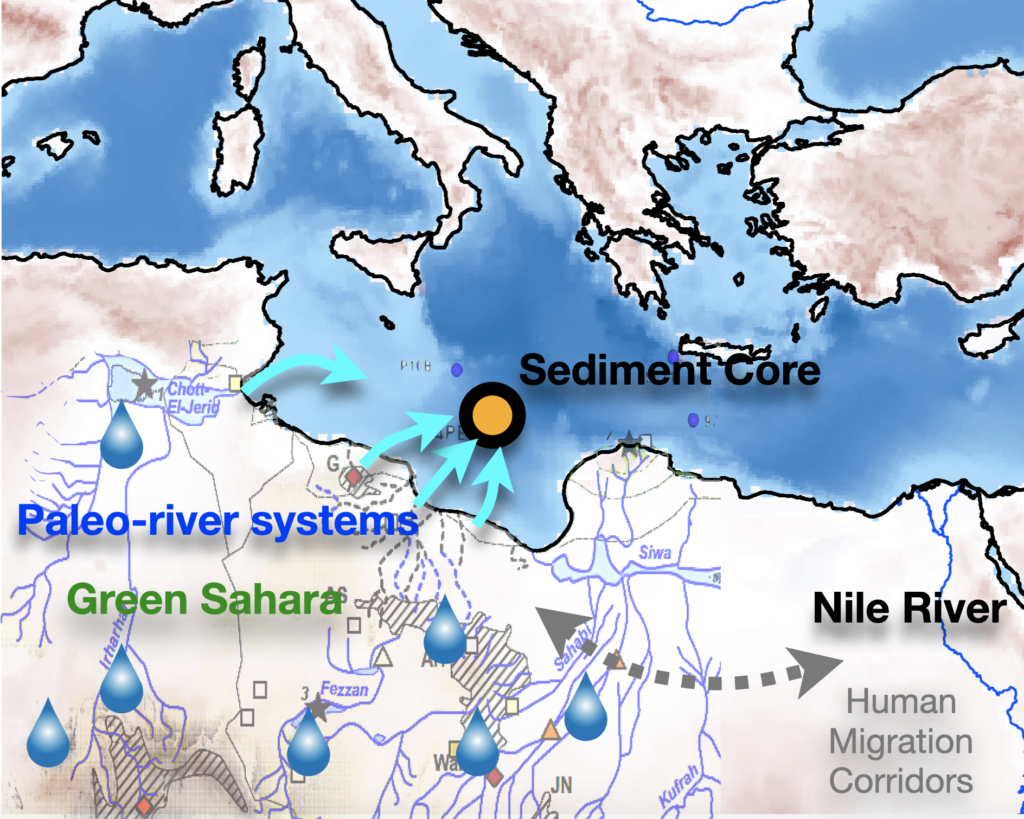
Image courtesy of Mike Hettwer
Wet and dry conditions in northern Africa alternated every ~20,000 years, according to a new study published in the journal Nature Geoscience.
Prehistoric engravings of giraffes and swimming humans suggest that 9,000-5,000 years ago large parts of the Sahara region were much less arid than today. This so-called Green Sahara, period which coincided with stronger summer solar radiation, was characterized by the presence of large lake and river systems, grasslands and much higher vegetation coverage as compared to today.
Earth’s summer radiation changes with a period of ~20,000 years, mostly due to the wobble of earth’s axis. To test whether similar astronomical conditions in the past led to other Green Sahara periods, an international team of paleo climate experts from Germany, South Korea, the Netherlands and the USA, examined ocean sediment cores from the Mediterranean Sea off the coast of Libya and climate model simulations that capture the evolution of the global climate system for almost 2 entire glacial cycles.
Analysing the ocean sediment cores with advanced geochemical methods, the team reconstructed the activity of paleo rivers for the last 160,000 years. “We found that changes in the Earth’s orbit and the waxing and waning of polar ice sheets paced the alternation of humid phases with high precipitation and long periods of almost complete aridity”, explains Cécile Blanchet from the German Research Centre for Geosciences in Potsdam, and lead-author of the study. The reconstructed Green Sahara periods lasted for about five thousand years and humidity spread over North Africa up to the Mediterranean coast. For the people of that time, this resulted in drastic changes in living conditions, which probably led to large migratory movements across northern Africa and a higher connectivity amongst groups from different areas.
“Computer model simulations confirm the pattern seen in the sediment cores, thereby supporting the notion of orbitally-paced early human migration corridors”, adds co-author Axel Timmermann, Director of the IBS Center for Climate Physics, Pusan National University, South Korea. Using their computer model the climate researchers further identified how changes in summer moisture transport towards northern Africa and winter changes of the Mediterranean storm track conspired to create the observed pattern of past wet/dry cycles in northern Africa.
Future research of the team will involve an extension of the geochemical analysis to deeper times and explicit computer modelling of the habitat of Archaic Homo sapiens. “This research will shed further light on unique early human fossils found in northwestern Africa, that date back to about 300,000 years” says Axel Timmermann.

– References
Cécile L. Blanchet, Anne H. Osborne, Rik Tjallingii, Werner Ehrmann, Tobias Friedrich, Axel Timmermann, Warner Brückmann and Martin Frank, Drivers of river reactivation in North Africa during the last glacial cycle, Nature Geoscience. DOI: 10.1038/s41561-020-00671-3 (2021)